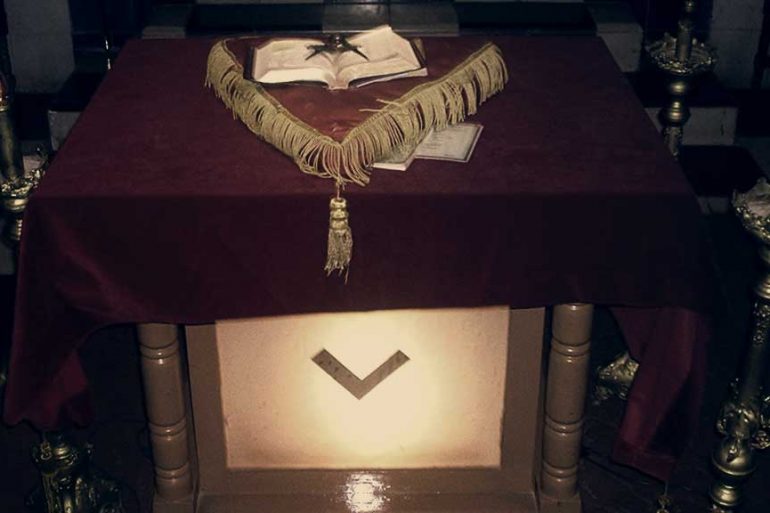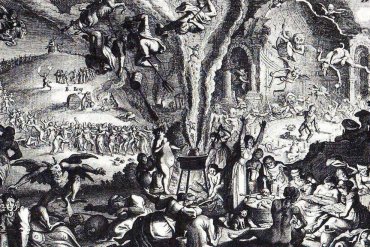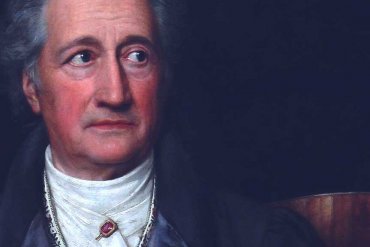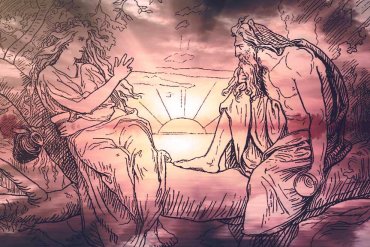The rich tapestry of human history is often woven with the delicate threads of symbolism and tradition. One such fascinating journey takes us into the ancestral cult of flowers, exploring the deep meanings associated with these blossoms across various cultures and epochs. Among the myriad flowers that have captured the human imagination, the Mayan Nicte and the Rose stand out as emblematic figures in the ancestral tapestry of flora. In Mayan culture, the Nicte, a...
In almost all myths all over the world the same theme reoccurs. The twelve knights, twelve tribes, twelve heroes etc. In his last and longest dialogue (Laws), Plato teaches: There are twelve feasts to the twelve Gods who give their names to the twelve tribes. Also in early christianity, the image of twelve disciples with the Godman figure at their center echoes the twelve constellations which revolve in the heavens around the pole star. Are...
Of all kinds, the Altar is one of the most common pieces of lodge furniture in secret societies, usually placed at the center of the lodge room, draped with an altar cloth, and provided with one or more symbolic objects. The existence of altars in lodge rooms is one of the facts most often pointed out by Christian critics of secret societies to claim that the latter practice a non-Christian religion. In some cases this claim is justified, in most […]...
The exploration of ancient symbols often reveals hidden threads connecting diverse cultures. In the Maier Files Chronicles, we delve into the higher meaning of the swastika, tracing its roots through various traditions and shedding light on its symbolism beyond conventional interpretations. Herman Wirth’s research on the Ur-Nordic races in Germany serves as a guiding beacon, unraveling the swastika’s significance in a broader, universal context. The Hyperborean Race: Unveiling the Nordic Origin Wirth’s groundbreaking work challenges...
In the last days of paganism in Germany, the druids’ sacrifices were subject to punishment by death at the hands of the literalist Christians. Nevertheless, at the beginning of springtime the “druids” and the populace sought to regain the peaks of the mountains so that they could make their sacrifices or experience their celebrations at these remote locations, intimidating and chasing off the Christians (usually through the latter’s fear of the devil). The legend of...
Bible quote from Book Exodus 22:18 “Don’t allow a female sorcerer to live.” Most legends and history intertwine and are inclusive of many items woven into a subject. As already said in previous post yesterday – https://www.maier-files.com/walpurgisnacht/ -, Walpurgis has many legends and stories very few which are true and have cost many innocent people their lives. If your garden or farm prospered better than your neighbors, if you had any form of physical deformity, you were old, ugly, particularly […]...
Socrates sometimes spoke of his daemon, meaning a good spirit who guided him through life. This might seem an alien concept for most of us today. But one can not deny as a matter of historical fact that folks who believed in idealism as a philosophy of life have always tended to trust in spirits, gods and angels. When it comes to the great-weaving cosmic thoughts, the active principles behind the appearances of things, many...
Poetry, in our time, is not only a misunderstood art, but one that has been subject to a systematic program of denaturing and falsification, at the hands of those Andrew Harvey has characterized as “official tastemakers who have outlawed the sublime, and… a contemporary poetry world addicted to cheap irony, unearned despair, bizarre pastiche, narcissistic confessionalism, and blindingly boring baroque word games” In earlier ages, among many peoples, poets were the repositories of the total...
Since the dawn of civilization, labyrinths have fascinated humankind. Knossos in Crete, has a distinctive circular maze design with seven rings. Exactly the same design appears mysteriously at different periods in history on stones and artifacts as far apart as India, Norway, Germany, Ireland, England, Arizona, … In English, the term labyrinth is generally synonymous with maze. As a result of the long history of unicursal representation of the mythological Labyrinth, however, many contemporary scholars and enthusiasts observe a distinction […]...
In the Maier files puzzle and quest everything adds up to something and there are several intertwined levels that will eventually result in solving the Otto Maier enigma. One clue and deeper meaning can maybe be found in the history of Saga because a Saga records the history of a people’s soul. Saga is one of the Norse goddesses who are numbered among the Asynjur. Snorri (Gylfaginning, ch. 35) lists her as the second goddess...
The number 12 symbolizes masculine solar rationality; 13 is very much connected with the Moon and old Goddess/feminine principle and intuition. The moon is by nature linked with womanhood as the length of the menstrual cycles are synced up with the waxing and waning of the moon, occurring around every 28 days. In the ancient times when people were more aware of nature, many women were synced up with the moon’s cycle, menstruating around the...
It’s been said that Otto Maier headed to Pohjola. Maybe this was an astray for the powerful men who tried to track him down. Maybe it’s just a clue or perhaps a code. But where’s Pohjola? Pohjola_ (poch’-yo-la) means the Northland something very similar to Hyperborea. Kalevala Far up in the ice-bound north, where the sun is almost invisible in winter, and where the summer nights are bright as day, there lies a land which we call Finland; but the […]...













